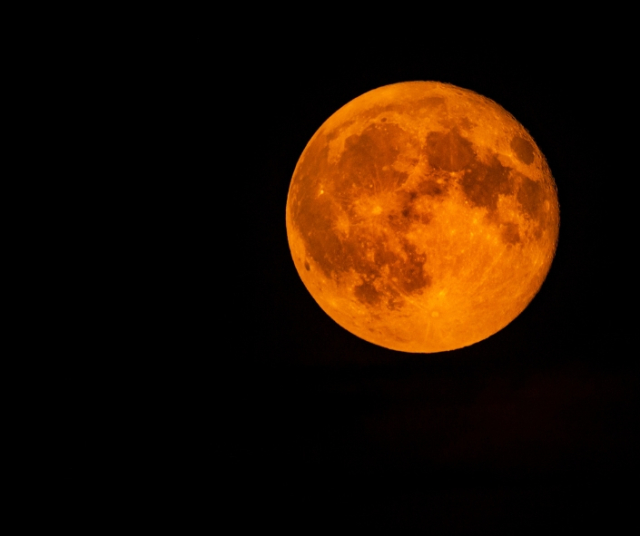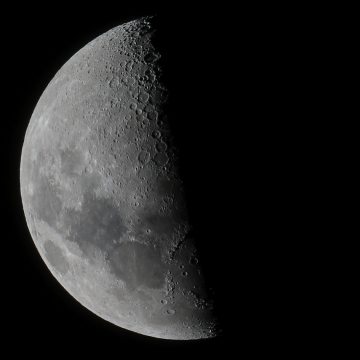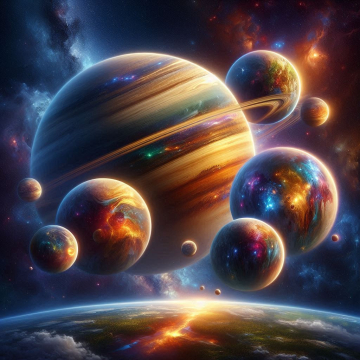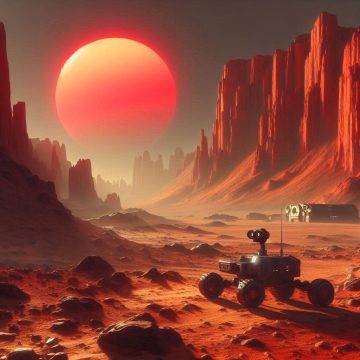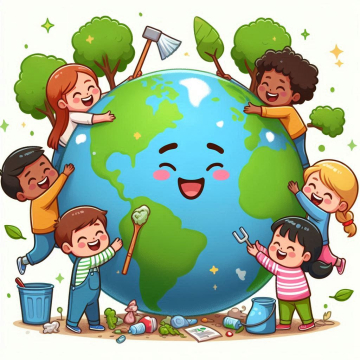The Moon, our planet's faithful companion, has been an object of fascination and observation since time immemorial. Its influence on Earth is undeniable, from the tides to the regulation of the Earth's axis, but it is also a constant source of wonders and mysteries.
Moon Phases: The Celestial Ballet
One of the most visible and well-known phenomena of the Moon is the cycle of lunar phases. These phases are the result of the relative position of the Moon, Earth and Sun in space. Beginning with the New Moon, when the Moon is between the Earth and the Sun, and moving through the Waxing Moon, the First Quarter Moon, the Gibbous Moon and finally reaching the Full Moon, this celestial ballet repeats itself month after month.
Moon phases have played a crucial role in human history. Before the proliferation of accurate clocks and calendars, moon phases were used to mark the passage of time. Additionally, they have influenced agriculture, navigation and culture around the world. The New Moon is often associated with a new beginning, while the Full Moon has long been a symbol of wholeness and completion.
Lunar and Solar Eclipses: Magical and Mysterious
Eclipses, both lunar and solar, are astronomical events that have left humanity in awe for millennia. Lunar eclipses occur when the Earth passes between the Sun and the Moon, casting its shadow on the Moon. This results in the Moon taking on a reddish hue during the total eclipse, an event that has been observed since ancient times and has inspired numerous legends and myths.
On the other hand, solar eclipses occur when the Moon comes between the Earth and the Sun, casting its shadow on the Earth and blocking the Sun's light in certain areas. These events are amazing and often require special precautions for viewing, such as eclipse glasses. Total solar eclipses are especially impressive, as for a few minutes, day turns to night and the flames of the solar corona can be seen.
The Dark Side of the Moon: An Enduring Mystery
Although it is not a phenomenon that changes over time, the "dark side" of the Moon has long been an enigma. The Moon is "docked" to the Earth, meaning that the same side of the Moon always faces the Earth, while the opposite side remains in darkness at most times. This has led to the misconception that the far side of the Moon is perpetually dark. However, the reality is that the far side of the Moon is not darker than the visible side. The lack of visibility is due to the Moon having no significant atmosphere to disperse the Sun's light. Over the years, several space missions have explored the far side of the Moon, revealing equally intriguing and stunning landscapes.
Craters and Lunar Seas: Marks of a Violent Past
The surface of the Moon is dotted with craters, some of which are truly impressive. These craters are evidence of violent collisions with asteroids and comets throughout lunar history. The largest of these craters are visible even from Earth, such as the famous Tycho Crater and Copernicus Crater.
In contrast to craters, lunar maria are areas of the surface that appear smooth and dark. Although they are called "seas," they are actually plains of solidified lava created by volcanic eruptions billions of years ago. One of the largest seas is the Sea of Serenity, which is famous for being the landing site of the Apollo 11 mission, where astronauts Neil Armstrong and Buzz Aldrin walked on the lunar surface for the first time in history.
The Moon and the Tides: A Cosmic Dance
The Earth's tides are directly related to the gravitational influence of the Moon. As the Moon moves across the sky, its gravity affects the waters of the oceans, creating the high and low tides we experience daily. This phenomenon is clear evidence of how the Moon has a tangible impact on Earth.
Tides, however, are not limited to the oceans. They also affect smaller bodies of water, such as lakes and rivers. Additionally, tides can have an impact on navigation and marine life, as the variation in water level can be significant.
The Effect of the Moon on Earth: Climate and Ecology
The Moon not only influences the tides, but also has a more subtle effect on the Earth's climate and ecology. Its orbit and relative position with respect to the Sun affect seasons and weather patterns. The Moon, when interacting with the Earth's atmosphere, can generate phenomena such as lunar rainbows, which are colored circles around the Moon caused by the refraction of light through water droplets in the atmosphere.
Additionally, some animals are guided by the lunar phases. For example, sea turtles nest on the beach during a full moon, and some insects are influenced by the moon's brightness. The Moon can also affect the visibility of nocturnal animals, such as owls and wolves, that hunt under Moonlight.
Lights and Shadows on the Moon: Optical Phenomena
The lunar surface is a canvas of light and shadow, and these optical phenomena often baffle and amaze observers. One of the most notable is the "terminator," the line that separates the illuminated part of the Moon from the dark part. As the Moon advances in its orbit, the terminator shifts, revealing details on the lunar surface that were previously in darkness.
Long shadows on the Moon can create interesting optical illusions, such as mountains that appear to move when viewed from Earth. There are also phenomena such as lunar flares, which are brief flashes of light that occur when sunlight reflects off objects or irregularities on the lunar surface. These glimpses have led to speculation about the presence of extraterrestrial bases on the Moon, although there is no credible evidence to support such claims.
The Moon in Human Culture: Myths and Legends
Throughout history, the Moon has been a source of myths and legends in many cultures around the world. The ancient Greeks worshiped Selene, the goddess of the Moon, and the ancient Egyptians linked the Moon with Thoth, the god of writing and knowledge. Even today, many cultures have stories and myths related to the Moon.
The Moon has also influenced literature, art and music. From the famous poem "Luna" by Federico García Lorca to the paintings of Vincent van Gogh, the Moon has been an inexhaustible source of inspiration. In music, songs like Frank Sinatra's "Fly Me to the Moon" and Creedence Clearwater Revival's "Bad Moon Rising" have propelled the Moon to the top of popular culture.
Lunar Exploration: The Pioneering Human Journey into Space
The Moon has been a target of exploration since the early days of the space race. In 1969, NASA achieved a historic milestone with the Apollo 11 mission, which took astronauts Neil Armstrong and Buzz Aldrin to walk on the lunar surface. This monumental feat not only demonstrated humanity's ability to reach the Moon, but also provided an unprecedented view of our natural satellite.
Later Apollo missions also explored the Moon, collecting valuable scientific data and bringing lunar rock samples back to Earth. More recently, robotic missions, such as the Chinese Yutu-2 rover and NASA missions, have continued to investigate the Moon in search of more information about its history and geology.
The Future of Lunar Exploration: Return to the Moon and Beyond
Interest in the Moon has not diminished in the 21st century. Several nations have plans for future manned and unmanned lunar missions. NASA, for example, is working on its Artemis program, with the goal of sending the first woman and the next man to the Moon. Additionally, plans are being developed to establish a long-term presence on the Moon, which would serve as a springboard for future missions to Mars and beyond.
Future missions will also explore lunar resources, such as water ice that has been discovered in lunar craters, which could be essential to maintaining a sustainable presence on the Moon and beyond.
